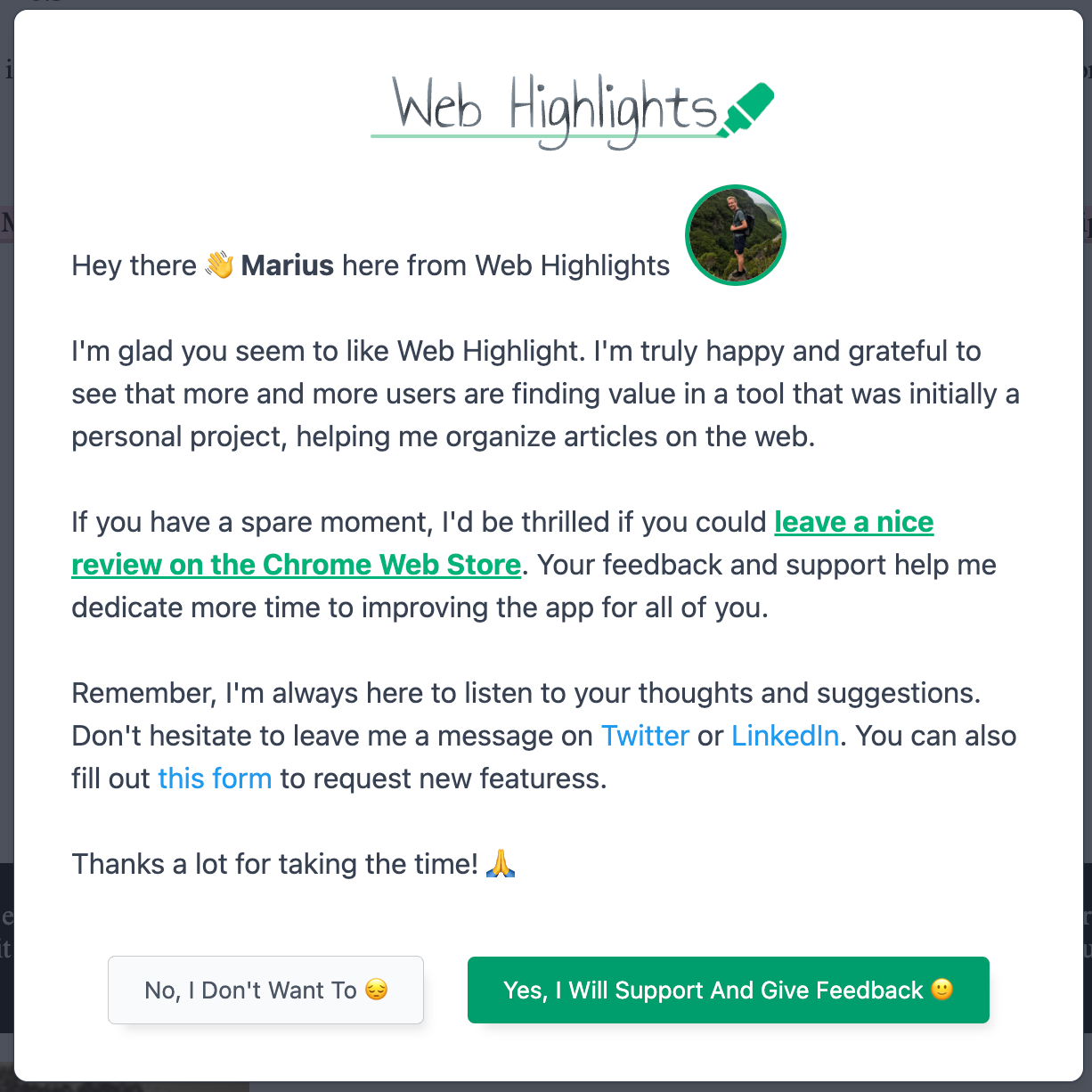How I Grew My Chrome Extension to 100K Users Without Marketing Costs
Learn how I grew my Chrome Extension to 100K users without a budget. Explore growth hacks, SEO tips, user review strategies, and product-building insights.

I’m not a Marketing expert. I’m a developer who picked up a few useful tips along the way that helped me grow my Chrome Extension to over 100K active users.
Here are the three most important steps I took:
1. Learn about Search Engine Optimization (SEO)
In theory, we all know what Google, Bing and other search engines do — they help us find the most relevant websites for whatever we’re looking for.
However, very few people know what power it can have if you use just a few simple SEO techniques to rank higher on Google. Understanding the importance of SEO was an eye-opener for me and the single most important factor in generating regular and free traffic.
Leveraging SEO was most likely the biggest reason why more than 100,000 users are using Web Highlights today.
SEO sounds complex, but it’s mainly about 3 things:
- Creating content: For example, start a blog on your website and write about topics related to your niche. If your content is good, people will find you on Google and will also want to know more about your website.
- Get Backlinks: A backlink is just an anchor link from a different site to your site. Make sure to get as many of them as possible to boost your site’s authority.
- Make your page fast: Ensure your website loads quickly and runs smoothly on all devices. Google and other search engines prefer to show fast, user-friendly sites over slow ones.
If you want to dig deeper, here are some resources that can help you to get started:
- 3 Instant Ways to Increase Your Google Ranking
- 3 Advanced Ways to Increase Your Google Ranking
- SEO Strategies I Used to Gain 2,000 Users In Two Months
2. Asking for Reviews
Have you ever wondered why books on Amazon are rated so high? I rarely see books with less than 4 stars on average, and most of them even have more than 4.5 stars on average. Why is that?
I don’t have any data to back this up, but I bet one of the main reasons is that when you finish a book on a Kindle, you’re prompted to leave a review. If you read a book all the way to the end, it’s usually a sign you liked it, since you probably wouldn’t have finished it otherwise.
So, why don’t we do this in product management too? One of the most important things I implemented for Web Highlights was the automatic prompt to rate my app.
I am doing this once a user has highlighted more than 5 different websites. That’s my sweet spot where I believe that those users like the app. Asking only them ensures they are happy with the app, so they hopefully give 5 stars.

Since implementing this rating prompt, my Chrome Extension’s gets several ratings every day. Having lots of reviews not only adds credibility to your app, but also boosts its in-store SEO.

For example, if many users mention that the app increases their “productivity,” Web Highlights will rank higher for the keyword “productivity” in the Chrome Web Store.
So, if you’ve published an app, be sure to ask for reviews. Creating a prompt for reviews is simple, but it can significantly impact your growth.
3. Building ONE Great Product
I know what you’re thinking: Why would he include “building a great product” in a list of growth hacks?
The reason I’m pointing this out is that I see more and more people rushing to build something low-quality just to get rich quickly, believing that “Marketing is what matters.”
Marketing does matter, but so does building a great product.
Have you seen this new trend on Twitter of people who start building 12 products in 12 months?
How should this even work when even building one product is too much? Many people are experiencing what psychologists call Shiny Object Syndrome:
Shiny object syndrome (SOS) is a continual state of distraction brought on by an ongoing belief that there is something new worth pursuing.
- productplan.com
Just like a small child chasing after shiny objects. Once they get there and see what the object is, they immediately lose interest and start chasing the next thing. For you, rather than literal shiny objects, shiny objects may be side-projects, technologies, or programming languages.

So, instead of rushing from side-project to side-project, try to focus on building one exceptional product that is helping others.
Your product should be so good that even your competitors recommend it. — Elon Musk
Thanks for reading!
Want to learn more about how I scaled my Chrome Extension to almost 100,000 users as a solopreneur? Follow me on LinkedIn and Twitter.
If you read a lot online, make sure to check out my Chrome Extension loved by 100,000+ active user — it’s free (also available on Microsoft Edge).
